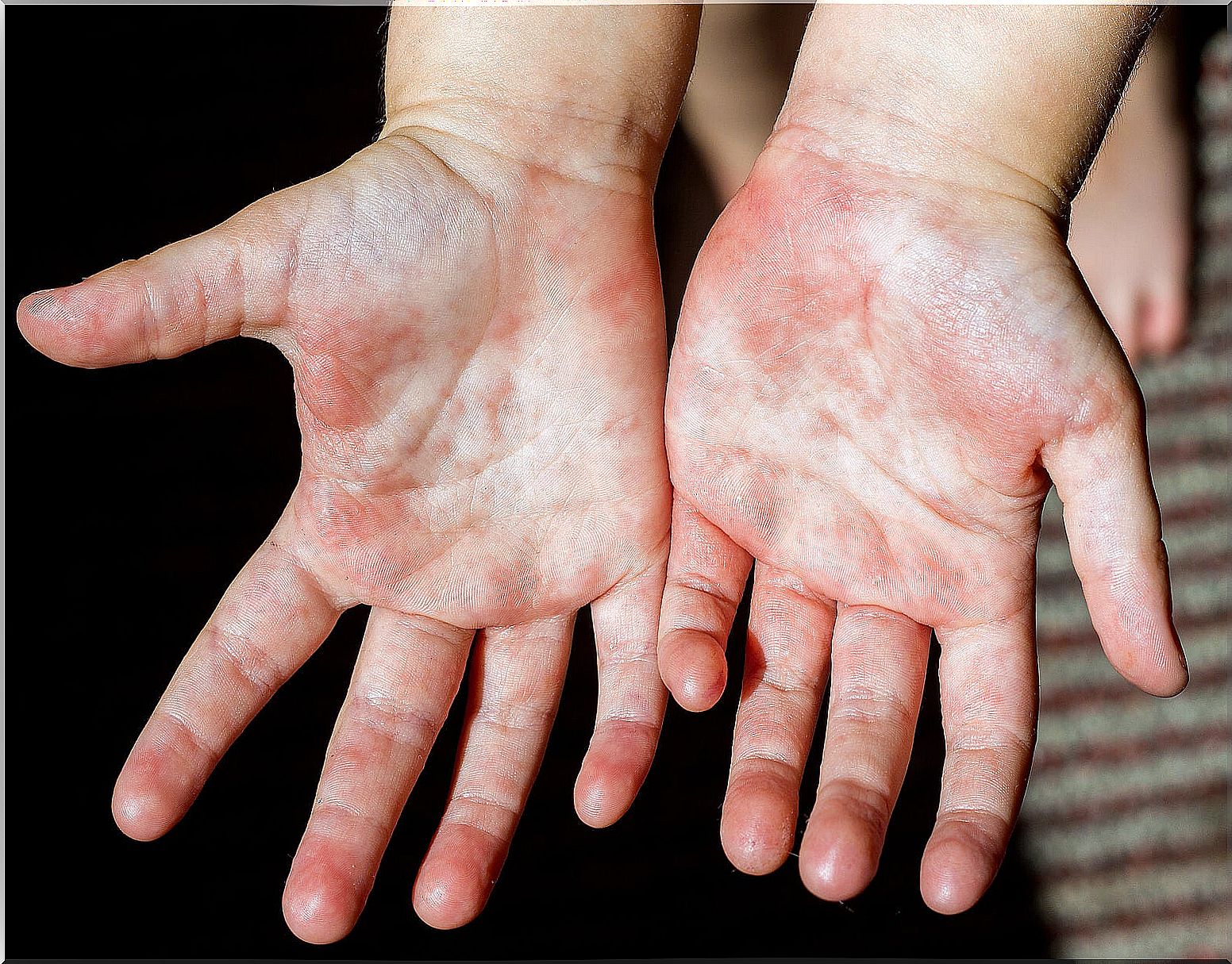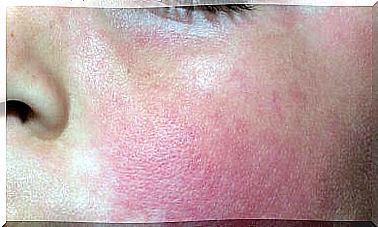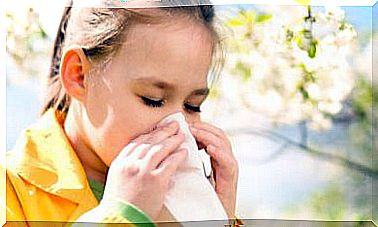Children With Skin Allergies: Symptoms And Recommendations
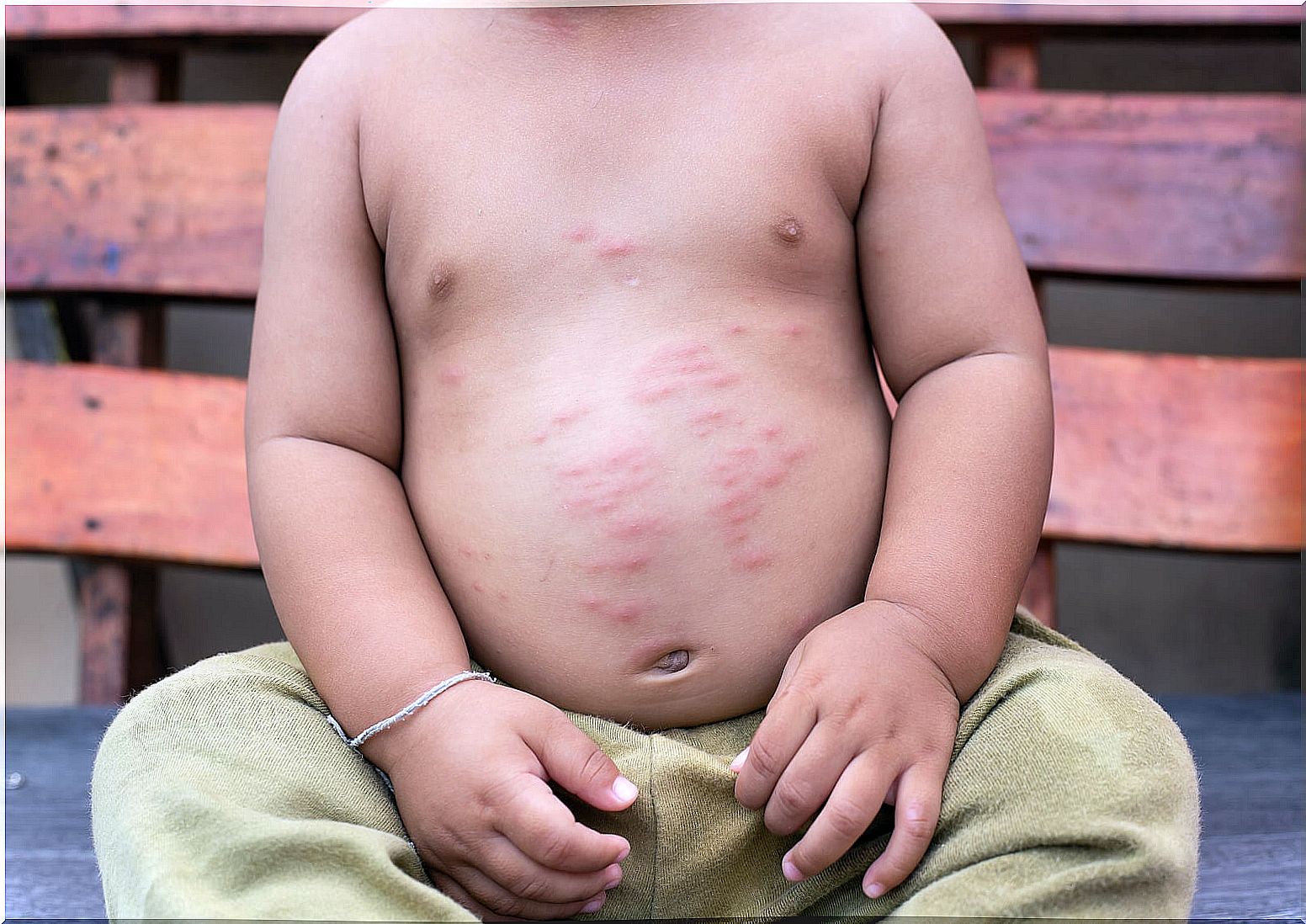
Children are more likely to develop skin allergies because their skin surfaces are not fully developed. That is, the skin is more sensitive and delicate compared to that of the adult. This is why it is recommended to carry out the necessary care and hygiene in order to maintain the functional skin barrier.
Children with skin allergies
Skin allergies are the manifestation of reactions of the immune system to certain plants, insects, animals or foods.
Food allergies
Childhood food allergies are a rapidly growing public health problem. Overall, between 220 and 250 million people around the world have food allergies, and children make up the majority of cases.
In this sense, eight foods are responsible for around 90% of food allergies caused in childhood:
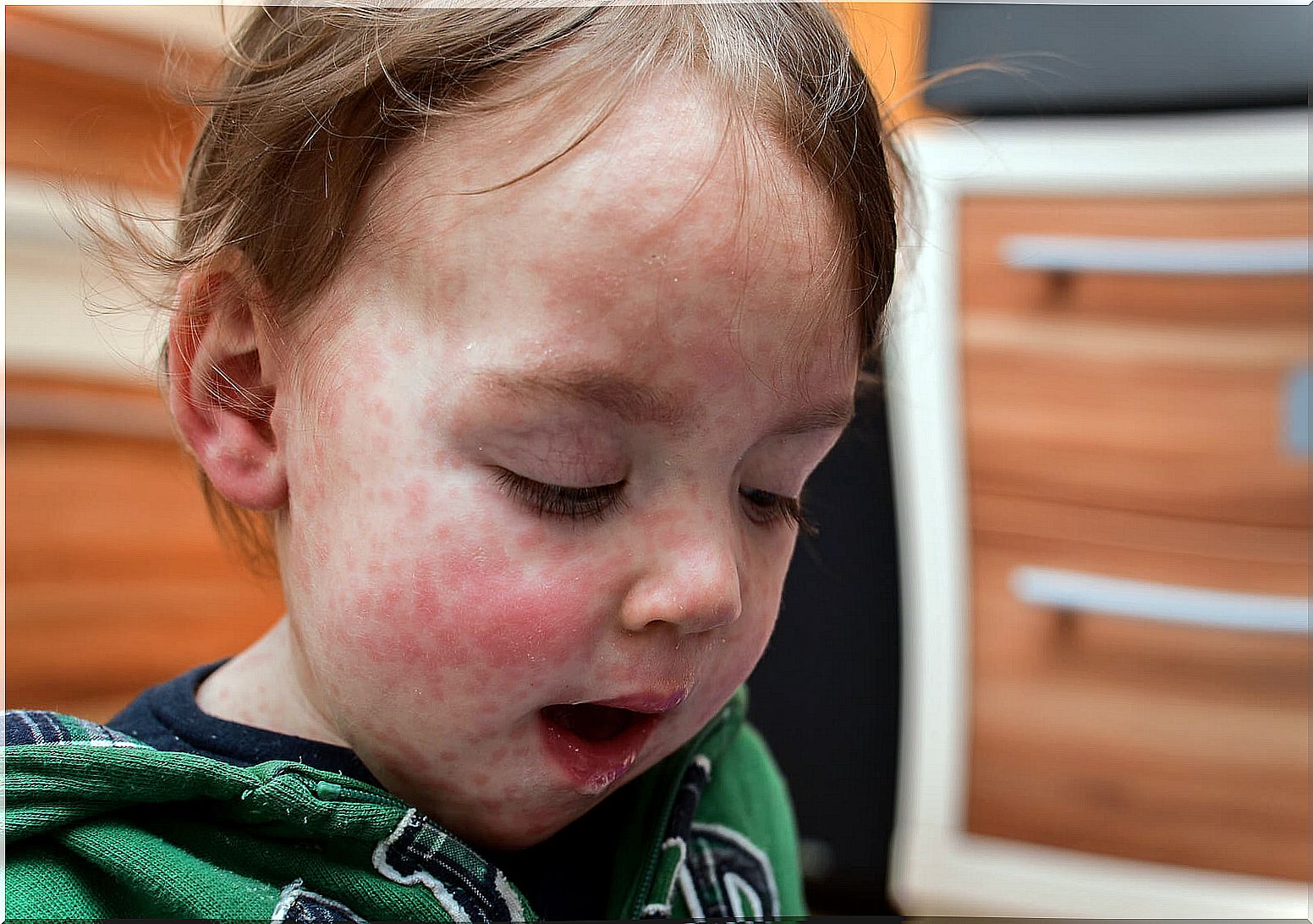
- Peanut or groundnut.
- Nuts.
- Eggs.
- Cow milk.
- Soy.
- Fish.
- Wheat.
- Seafood.
Once the food that triggers the allergic flare-ups has been established, it should be removed from the daily diet. The radioallergosorbency test (RAST) can also be performed, where a blood sample taken from the child is mixed with different foods to determine which of them the body reacts negatively to.
Contact dermatitis
Contact dermatitis is a common disease in children. In turn, it has its irritative and allergic forms. The substances responsible for contact dermatitis in children can be physical or chemical agents that cause irritant contact dermatitis or sensitizers that cause allergic contact dermatitis.
Clinical manifestations may include pruritic eczematous reactions localized at the site of contact with the incriminated substance.
Allergic forms can appear remotely, while irritant forms can lead to scaly or bullous erythematous lesions.
In turn, contact with metals increases exponentially during school age and adolescence. The causative agents with the highest incidence are nickel, chromium and cobalt.
How do skin allergies manifest?
Two of the most common clinical manifestations of skin allergies that occur in children are urticaria, angioedema, and atopic disease.
Urticaria
Urticaria is characterized by the presence of hives and angioedema from the release of histamines and other mediators from mast cells. The treatment of urticaria is based on 2 pillars:
- Pharmacological treatment.
- Avoid triggers and aggravators.
The use of oral corticosteroids should be for short periods and their chronic use should be avoided. Between 25 and 40% of chronic urticarias are refractory and require a systemic treatment approach.
According to the journal Alergia México , the most common subtypes of urticarial care in allergy services are spontaneous, papular, drug-induced, and dermographic urticaria.
Atopic disease
Atopic dermatitis is a chronic, relapsing inflammatory skin disease that begins early and has a lifetime prevalence of around 20%. The appearance of the individual skin lesion in atopic dermatitis does not differ from other eczema such as contact dermatitis.
In its acute form, eczema is characterized by the following patterns:
- Bright red infiltrate with edema.
- Vesicles
- Suppuration.
- Scabs.
While the subacute and chronic form presents lichenification, excoriations, papules and nodules. Even the severity of eczema can be classified according to scoring systems such as SCORAD and EASI.
Angioedema
Angioedema is sudden swelling that does not form depressions in the skin, mucous membranes, or both. Swelling of the tongue, pharynx and larynx are problematic situations that must be resolved and treated urgently.
The World Allergy Organization states that cases of urticaria and angioedema have been reported in up to 20% of the general population.

How to prevent or identify skin allergies in children?
It is recommended to incorporate complementary feeding from 6 months of age. In this sense, at present, organic foods have gained a boom, so they are the ones that are preferred.
It is also necessary to avoid processed foods and incorporate foods one by one and pay attention to the clinical manifestations that may appear.
Likewise, it is advisable to eliminate the agents that trigger or aggravate allergic reactions and, in turn, promote a healthy diet.
Skin care is no less important in preventing allergic skin reactions in children. Consequently, a correct daily moisturizing is ideal.
Skin care
Skin care is one of the necessary premises to take into account in the prevention of allergic skin reactions. Thus, constant and daily moisturizing, after bathing, contributes to maintaining the protective function of the skin barrier.
